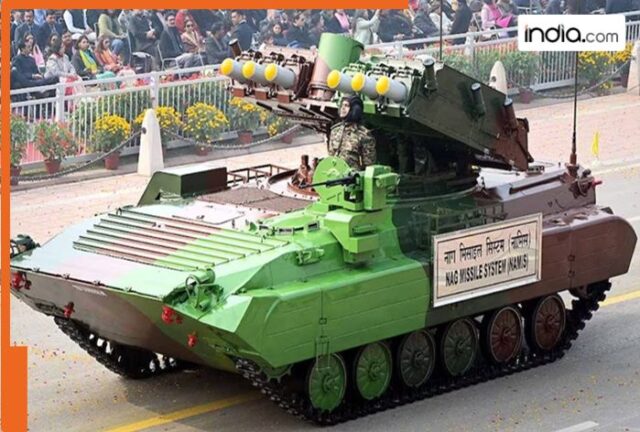Experts say that the Nag Mk-2 is highly effective against modern tanks, including those with advanced Explosive Reactive Armor (ERA). Although its exact range is classified, it is estimated to have a range of 7 to 10 kilometers.
India’s defense capabilities received a significant boost on Monday, January 13, with the successful testing of its homegrown third-generation anti-tank guided missile, Nag Mk-2. The Defence Research and Development Organisation (DRDO), which developed the missile, conducted the trials at the Pokhran field range in Rajasthan. Alongside the missile, the Nag Missile Carrier version-2 was also evaluated. DRDO confirmed that the entire system is now ready for induction into the Indian Army.
What makes Nag Mk-2 special?
The Nag Mk-2 is a fire-and-forget guided missile designed to destroy tanks and other armored targets. Its advanced capabilities and successful testing mark a significant step forward for India’s defense preparedness.
Successful testing at Pokhran
The trials were carried out in the presence of senior officers from the Indian Army. According to a DRDO statement, the missile system hit all its targets accurately during three separate tests, proving its effectiveness at both maximum and minimum ranges.
Defence Minister Rajnath Singh praised the DRDO, Indian Army, and industry partners for this achievement, highlighting the successful field trials as a major step toward strengthening India’s defense systems.
#WATCH | Field evaluation trials of the DRDO developed Nag Mark 2 anti-tank guided missiles were successfully carried out in the Pokharan firing ranges: DRDO officials pic.twitter.com/0h6G5NyZai
— ANI (@ANI) January 13, 2025
Capabilities of Nag Mk-2
The Nag Mk-2 is an advanced, all-weather anti-tank guided missile (ATGM) designed and made in India. It is a “fire-and-forget” missile, meaning once launched, it requires minimal intervention from the operator. Additionally, it has a “lock-on after launch” feature, which allows it to lock onto the target after being fired.
Experts say that the Nag Mk-2 is highly effective against modern tanks, including those with advanced Explosive Reactive Armor (ERA). Although its exact range is classified, it is estimated to have a range of 7 to 10 kilometers, a significant upgrade from its predecessor, the Nag Mk-1, which had a range of only 4 kilometers.
The missile is equipped with a tandem high-explosive anti-tank (HEAT) warhead, which increases its destructive power. It also has a top-attack mode, allowing it to strike the most vulnerable part of a tank – the top.
The Nag Mk-2 is launched from NAMICA, an armored vehicle based on India’s BMP-2 Sarath, which itself is based on a Russian BMP-2 system. The NAMICA is a mobile platform that gives the missile system flexibility and speed across different terrains.
Specifications of Nag Mk-2
The successful trials of the Nag Mk-2 mean it is now ready to be deployed in the Indian Army, marking a significant step towards India’s self-reliance in defense technology. Previously, India had to rely on purchasing anti-tank missiles from other countries, such as the 200 Spike missiles from Israel in 2020 after tensions with China in Ladakh.
With the Nag Mk-2, India will no longer depend on external sources for these weapons. The missile will also act as a deterrent against neighboring countries like Pakistan, where the military currently uses the Barq laser-guided missile, which is dependent on Turkish technology and lacks the fire-and-forget capability of the Nag Mk-2.
As for China, it has the HJ-10 missile, which has a similar range to the Nag Mk-2. However, the HJ-10 relies on wire guidance, making it more vulnerable to countermeasures. The Nag Mk-2’s advanced infrared seeker and top-attack feature give it a significant advantage, making it more effective against modern armored vehicles.
















































